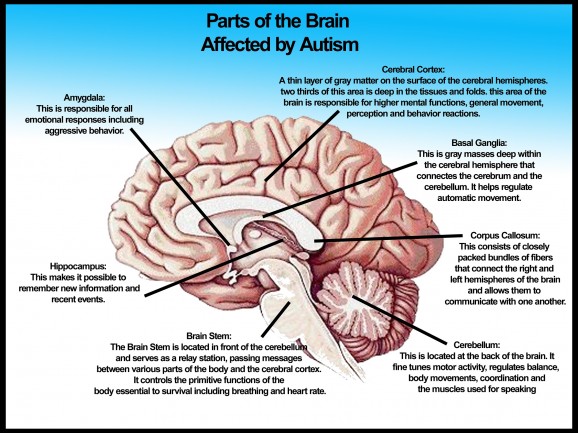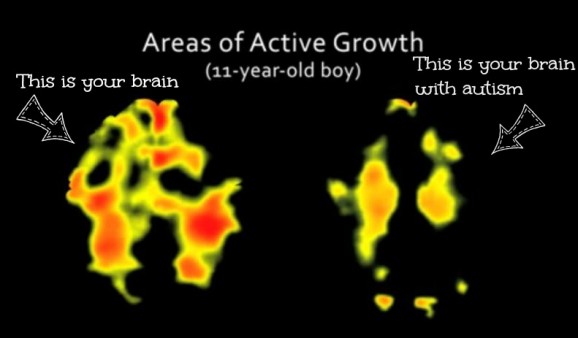Autism Theories Suggest The Disease Starts In The Second Trimester
This article is more than 2 years old
 The number of kids diagnosed with autism continues to increase. The CDC just announced that according to its new report, 1 in 68 children in the U.S. have been diagnosed with a disorder somewhere on the autism spectrum, which is about 30% higher than their 2012 report. The numbers vary depending on location in the U.S., as well as gender (autism is roughly five times more common in boys). Global numbers are up too. Maybe this is because we’re broadening the definition of autism to include syndromes such as Asperger’s; maybe awareness of autism has increased and more parents are getting their kids tested for it, which would result in higher positive diagnoses. Maybe there’s an environmental factor(s) or other risk factors to blame. Jenny McCarthy thinks vaccinations are to blame. Now, scientists have a new theory — that autism begins in the womb.
The number of kids diagnosed with autism continues to increase. The CDC just announced that according to its new report, 1 in 68 children in the U.S. have been diagnosed with a disorder somewhere on the autism spectrum, which is about 30% higher than their 2012 report. The numbers vary depending on location in the U.S., as well as gender (autism is roughly five times more common in boys). Global numbers are up too. Maybe this is because we’re broadening the definition of autism to include syndromes such as Asperger’s; maybe awareness of autism has increased and more parents are getting their kids tested for it, which would result in higher positive diagnoses. Maybe there’s an environmental factor(s) or other risk factors to blame. Jenny McCarthy thinks vaccinations are to blame. Now, scientists have a new theory — that autism begins in the womb.
A report in the New England Journal of Medicine reveals that the brains of kids with autism indicate cortical deterioration. The scientists took brain tissue from children who had died — children with and without autism — and examined their brains for indications of the disorders. Scientists could identify patches indicating disorganization of the cortex in the brains of the children with autism. The cortex covers the cerebrum, the brain’s most developed region that contributes to intelligence, thinking, perception, and personality, and the cerebellum, which is involved with movement, balance, and coordination. So basically, the cortex is where the major brain functions happen.

Given the centrality of the cortex, autism begins forming fairly early during pregnancy, within the second trimester. The scientists believe that whatever causes autism occurs before or around that point, given that the cortexes of children with autism don’t develop or organize the way other kids’ cortexes do. One of the scientists likened the cortex to a “layer cake” (yum yum!) with six layers, each containing different kinds of brain cells. The brains of the kids who didn’t have autism had those six layers, but the cortexes of those with autism were missing certain layers, and thus, certain kinds of cells, resulting in a disorganized assortment of cells. The missing layers or cells weren’t uniform in their location, and would thus have different effects, which scientists say makes sense given the range of symptoms in those with autism.
Thus, it’s likely that genes controlling the development of the brain play some role in autism. A UCLA study indicated genetic abnormalities in the brains of people with autism that would contribute to the disorganization of layers of the cortex. The study also indicates that treatment for autism would be more effective if it were started earlier, when the brain is more plastic and capable of essentially figuring out work-arounds.












